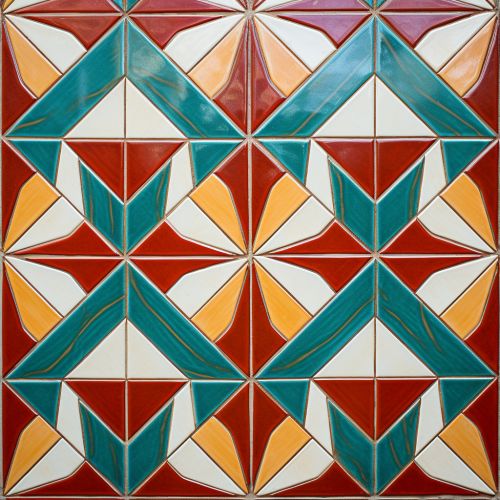Pattern
Introduction
A pattern, in the most general sense, is a discernible regularity in the world or in a manmade design. As such, the elements of a pattern repeat in a predictable manner. Patterns can be found in nature as well as in human-made structures, and they play a fundamental role in various scientific disciplines, including mathematics, physics, and computer science.


Patterns in Nature
Patterns in nature are visible regularities of form found in the natural world. These patterns recur in different contexts and can sometimes be modelled mathematically. Natural patterns include symmetries, trees, spirals, meanders, waves, foams, arrays, cracks, and stripes.
Symmetry
Symmetry is a pivotal concept in science and the arts. It involves a sense of harmonious and beautiful proportion and balance. In nature, symmetry is approximate. For example, plant leaves, while considered symmetrical, rarely match up exactly when folded in half.
Trees
Tree structures in nature can be observed in various forms, including biological taxonomy, ecosystems, and processes such as river networks. The branching pattern of trees and leaves is an example of a fractal pattern, a type of pattern that repeats itself on different scales.
Spirals
Spirals are common in plants and in some animals, notably molluscs. For example, the pattern of seeds in a sunflower follows a spiral pattern. In this case, the angle helps to optimize packing, so that the plant can grow efficiently.
Patterns in Mathematics
In mathematics, a pattern can be a rule that describes a sequence of numbers, shapes or other mathematical objects. Patterns in mathematics might be observed in different areas such as algebra, geometry, and number theory.
Algebraic Patterns
In algebra, patterns are often represented by algebraic expressions or equations. For example, the sequence 2, 4, 6, 8, 10,... can be represented by the algebraic expression 2n, where n represents the position of a term in the sequence.
Geometric Patterns
In geometry, patterns can be observed in shapes and their arrangements. For example, tessellations are patterns formed by repeating shapes to fill a plane without any gaps or overlaps.
Number Patterns
In number theory, patterns can be found in the distribution of prime numbers, the digits of irrational numbers, and the properties of integers.
Patterns in Physics
In physics, patterns can be observed in phenomena at all scales, from the microscopic to the cosmic. These patterns often obey certain mathematical laws.
Quantum Patterns
At the smallest scales, the patterns of quantum mechanics become important. For example, the wave function of a particle in a box is a pattern that describes the probability of finding the particle at a certain location.
Classical Patterns
At larger scales, the patterns of classical mechanics can be observed. For example, the motion of a pendulum follows a regular pattern that can be described by a simple mathematical equation.
Cosmic Patterns
At the largest scales, the patterns of cosmology are observed. For example, the distribution of galaxies in the universe follows a large-scale pattern that is still not fully understood.
Patterns in Computer Science
In computer science, a pattern is a reusable solution to a commonly occurring problem. Patterns in computer science can be found in areas such as algorithms, data structures, and software design.
Algorithmic Patterns
In algorithm design, patterns can be observed in the structure of efficient algorithms. For example, the divide-and-conquer pattern is used in many efficient algorithms, such as quicksort and the fast Fourier transform.
Data Structure Patterns
In data structure design, patterns can be observed in the arrangement of data for efficient access and modification. For example, the binary search tree is a data structure that follows a specific pattern for storing and retrieving data.
Software Design Patterns
In software design, patterns are formalized best practices that a programmer can use to solve common problems when designing an application or system.
